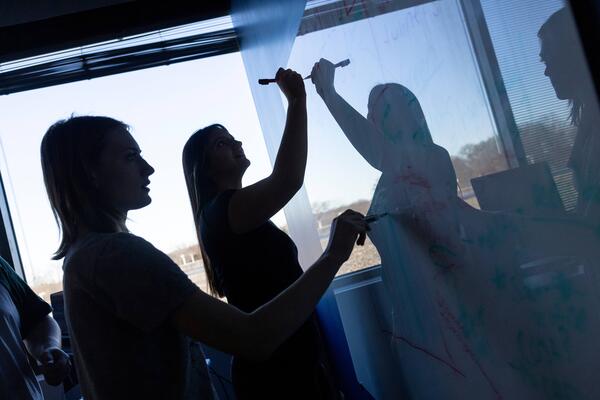
Supporting Transfer Student Success Through Data
Transfer students often experience a range of challenges transitioning from a community college to a four-year institution, including credit loss and feeling like they don’t belong on campus.
At the University of California, Santa Barbara, about 20 percent of incoming students are transfers. More than 90 percent of those transfers come from California community colleges and aspire to complete their degree in two years.
While many have achieved that goal, they often lacked time to explore campus offerings or felt pressured to complete their degree on an expedited timeline, according to institutional data.
“Students feel pressure to complete in two years for financial reasons and because that is the expectation they receive regarding four-year graduation,” said Linda Adler-Kassner, associate vice chancellor of teaching and learning. Transfer students said they don’t want to “give up” part of their two years on campus to study away, she said.
Institutional data also revealed that their academic exploration opportunities were limited, with fewer transfers participating in research or student groups, which are identified as high-impact practices.
As a result, the university created a new initiative to improve transfer student awareness of on-campus opportunities.
Getting data: UCSB’s institutional research planning and assessment division conducts an annual new student survey, which collects information on students’ demographic details, academic progress and outside participation or responsibilities. The fall 2024 survey revealed that 26 percent of transfers work for pay more than 20 hours per week; an additional 40 percent work between 10 and 20 hours per week. Forty-four percent of respondents indicated they do not participate in clubs or student groups.
In 2024, the Office of Teaching and Learning conducted a transfer student climate study to “identify specific areas where the transfer student experience could be more effectively supported,” Adler-Kassner said. The OTL at UCSB houses six units focused on advancing equity and effectively supporting learners.
The study found that while transfers felt welcomed at UCSB, few were engaging in high-impact practices and many had little space in their schedules for academic exploration, “which leads them to feel stress as they work on a quick graduation timeline,” Adler-Kassner said.
Put into practice: Based on the results, OTL launched various initiatives to make campus stakeholders aware of transfer student needs and create effective interventions to support their success.
Among the first was the Transfer Connection Project, which surveys incoming transfer students to identify their interests. OTL team members use that data to match students’ interests with campus resources and generate a personalized letter that outlines where the student can get plugged in on campus. In fall 2025, 558 students received a personal resource guide.
The data also showed that a majority—more than 60 percent—of transfers sought to enroll in four major programs: communications, economics, psychological and brain sciences, and statistics and data science.
In turn, OTL leaders developed training support for faculty and teaching assistants working in these majors to implement transfer-focused pedagogies. Staff also facilitate meet-and-greet events for transfers to meet department faculty.
This work builds on the First Generation and Transfer Scholars Welcome, which UCSB has hosted since 2017. The welcome event includes workshops, a research opportunity fair and facilitated networking to get students engaged early.
The approach is unique because it is broken into various modules that, when combined, create a holistic approach to student support, Adler-Kassner said.
Gauging impact: Early data shows the interventions have improved student success.
Since beginning this work, UCSB transfer retention has grown from 87 percent in 2020 to 94 percent in 2023. Similarly, graduation rates increased 10 percentage points from 2020 to 2024. Adler-Kassner noted that while this data may be correlated with the interventions, it does not necessarily demonstrate causation.
In addition, the Transfer Student Center reaches about 40 percent of the transfer student population each year, and institutional data shows that those who engage with the center have a four-percentage-point higher retention rate and two-point higher graduation rate than those who don’t.
Do you have an intervention that might help others promote student success? Tell us about it.
Source link



